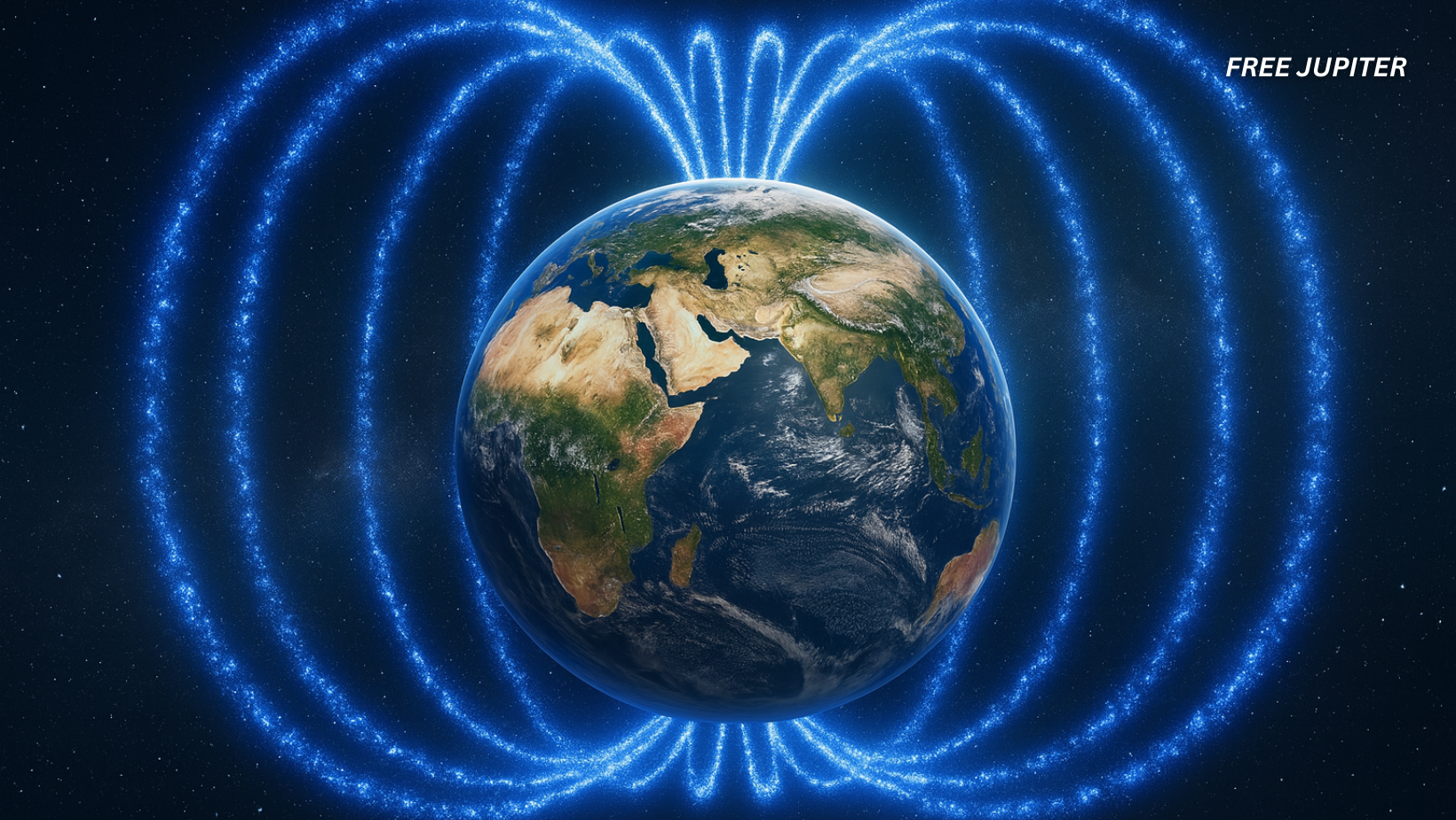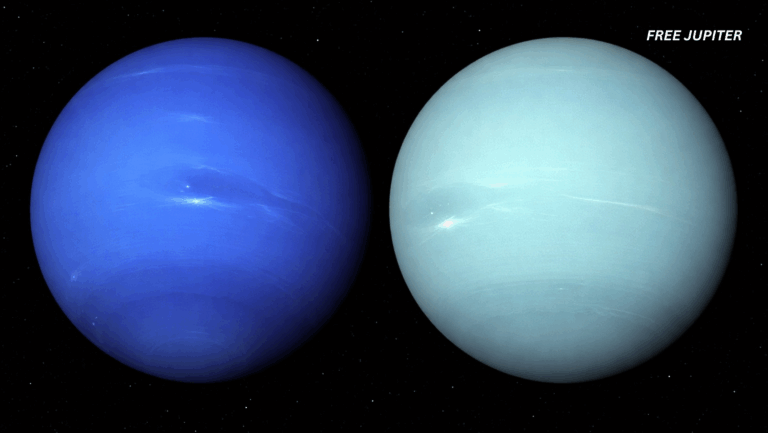Most people imagine the North Pole as a frozen crown sitting at the very top of Earth—a lonely point where the world’s axis pierces through the Arctic. That image isn’t wrong, but it’s incomplete. In fact, Earth has two different North Poles: one geographic, the other magnetic. While the geographic pole is stable and unmoving, its magnetic twin is a restless wanderer.
Recently, scientists confirmed that the magnetic North Pole has once again shifted position. This latest move is part of an ongoing journey that has seen it drift across the top of the planet for centuries. For the average person, this news might sound like a piece of quirky trivia. But for navigators, pilots, and scientists, keeping track of the pole’s whereabouts is surprisingly important.
A Tale of Two Poles
To understand why this matters, it helps to separate the two poles.
- Geographic North Pole: This is the “true north,” the fixed point where Earth’s axis of rotation meets the planet’s surface in the Arctic Ocean. It doesn’t move—at least not in any way that affects navigation.
- Magnetic North Pole: This is the spot compasses point toward. But unlike true north, it isn’t fixed. It drifts because of what’s happening deep inside Earth’s core.
The two poles can be hundreds of miles apart, and that gap changes over time. Early explorers often struggled with this difference, sometimes charting courses that seemed slightly “off” because their compasses didn’t point directly to true north.
Read more: Scientists Successfully Summon a Massless ‘Demon’ Particle
Why the Pole Wanders
So what exactly makes magnetic north so fidgety? The answer lies beneath our feet, about 3,000 kilometers below Earth’s surface.
Earth’s outer core is made of molten iron and nickel. Imagine a gigantic churning ocean of liquid metal. As this metallic sea swirls and flows, it generates electric currents, which in turn create a magnetic field. This phenomenon is known as the geodynamo—a natural engine that powers Earth’s magnetism.
But because the molten metal never stops moving, the magnetic field isn’t stable. The poles shift as the underground currents change direction, slow down, or speed up. Sometimes the movement is sluggish, other times it accelerates. At its fastest, the pole has been known to dash along at 55 kilometers per year, which is quick by geological standards.
The Current Drift: Toward Siberia
For centuries, the magnetic North Pole lounged around the Canadian Arctic, but in recent decades, it has been making a determined dash toward Russia. Today, it’s located in the high Arctic, slowly edging closer to Siberia.
This eastward migration has been tracked carefully by scientists using satellites, observatories, and on-the-ground measurements. The journey isn’t a straight line—it’s more like a wandering trail. But the overall direction is clear: away from North America and toward Eurasia.
Why Navigation Depends on It
You might be wondering: if most people rely on GPS, does the magnetic pole’s drift even matter? The answer is yes and no.
- No, for everyday GPS use. Smartphones, car navigation systems, and many modern tools rely on satellites orbiting Earth. These aren’t thrown off by shifts in the magnetic field.
- Yes, for compasses and specialized navigation. Airplanes, ships, and even military systems often still rely on compasses or magnetically based data as backups. In remote areas—like the Arctic, where GPS signals may be weak—traditional navigation tools are essential.
To make sure maps, compasses, and systems stay accurate, scientists at the U.S. National Oceanic and Atmospheric Administration (NOAA) and the British Geological Survey (BGS) update something called the World Magnetic Model (WMM) every five years. This model acts like a constantly updated cheat sheet that reflects the pole’s latest position. Pilots, sailors, and even smartphone compass apps quietly rely on it.
Read more: First-Ever Recording Captures Black Hole “Kicked” Across Space And Time
A Long History of Confusion
Magnetic drift isn’t just a modern nuisance—it has puzzled humanity for centuries. Early Chinese navigators using rudimentary compasses as far back as the 11th century noticed that the needle didn’t always align perfectly with north.
Later, European explorers in the Age of Discovery—think Columbus and Magellan—recorded strange compass errors during their voyages. At first, these discrepancies were blamed on faulty instruments. Only much later did scientists realize that magnetic north and true north were different, and that the magnetic pole itself moves.
Pole Reversals: When North Becomes South
The pole’s wandering isn’t the strangest thing about Earth’s magnetism. Over the past 20 million years, the planet’s magnetic field has completely flipped dozens of times. In these events, north becomes south, and south becomes north.
These reversals don’t happen overnight—they unfold over thousands of years. The last full reversal occurred about 780,000 years ago, during the Stone Age. Scientists aren’t expecting an immediate flip anytime soon, but the weakening of Earth’s magnetic field in some regions has sparked curiosity about whether we might be heading in that direction again.
Would such a reversal be catastrophic? Probably not. While it might disrupt satellites and navigation temporarily, there’s no evidence it would cause mass extinctions or global chaos. For most people, life would go on—though compass makers might be very busy.
Everyday Impact: Should You Worry?
For the average person, the shifting pole won’t change daily life. Your GPS will still guide you to the nearest coffee shop, your phone compass will quietly update, and air travel won’t suddenly go haywire.
But for those who operate in the high latitudes—think Arctic researchers, sailors navigating icy waters, or pilots flying near the pole—the accuracy of magnetic data is essential. Even small errors in navigation can become big problems in environments where landmarks are scarce and survival depends on precision.
A Planet That Refuses to Sit Still
The magnetic pole’s migration is more than just a curiosity. It’s a reminder that Earth is alive in ways we don’t always see. Beneath the solid crust lies a restless metallic heart, its ceaseless motion shaping the invisible shield that protects us from harmful solar radiation. Without this magnetic field, Earth would be far less hospitable, battered by charged particles streaming from the Sun.
So the next time you pull out a compass—or open a map app on your phone—it might be worth pausing to remember that the “north” guiding you is not as steady as it seems. The pole is on the move, and in its own quiet way, it’s telling the story of a planet in motion.
Read more: The Moon Is Slowly Drifting Further Away From Earth Each Year — A Physicist Explains Why
The Takeaway
The official shift of the magnetic North Pole isn’t cause for panic—it’s simply part of Earth’s natural rhythm. What it reveals is fascinating:
- Our planet’s interior is a dynamic, molten engine.
- Navigation, both ancient and modern, has always relied on keeping up with its quirks.
- Even something as “fixed” as north is, in reality, on the move.
The ground beneath us might feel solid, but the forces shaping Earth are in constant motion. In that sense, the drifting pole is more than just a scientific detail—it’s a reminder that we live on a restless, ever-changing world.
Featured image: GPT-5o Recreation.
Friendly Note: FreeJupiter.com shares general information for curious minds. Please fact-check all claims and double-check health info with a qualified professional. 🌱










